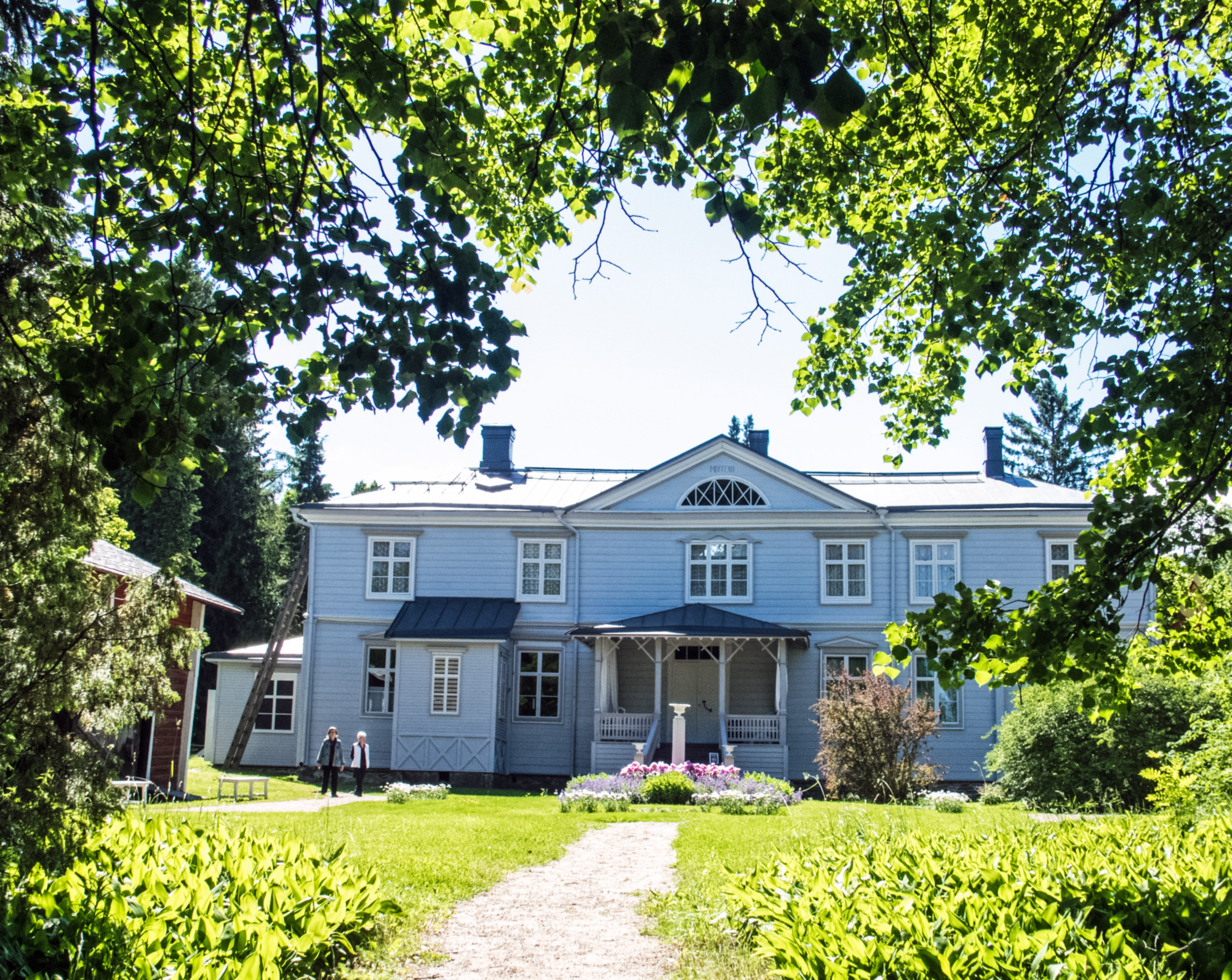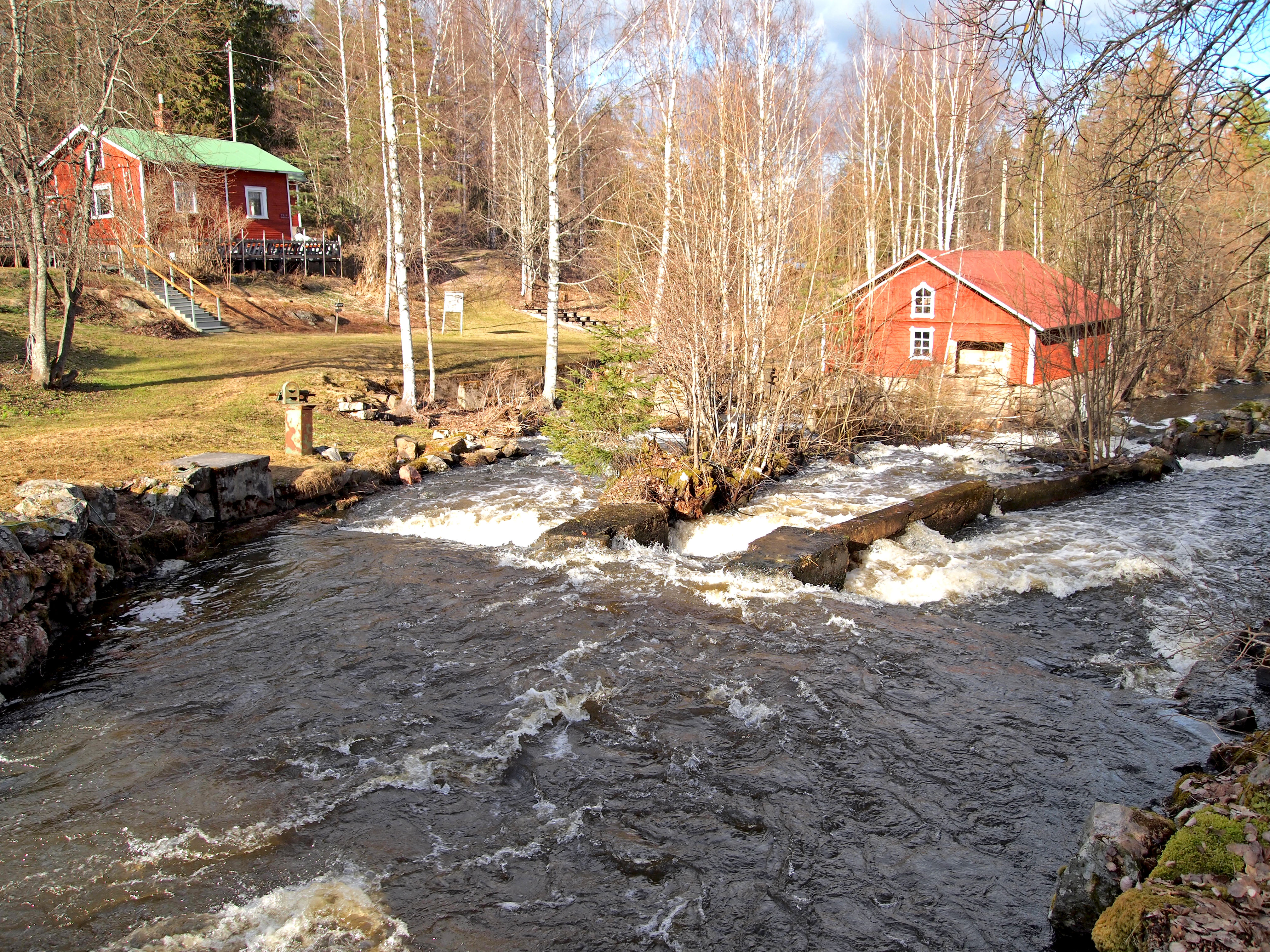|
Asikkala (village)
Asikkala () is a municipality of Finland. Its seat is in Vääksy, at the shores of the Lake Päijänne. It is located in the province of Southern Finland and is part of the Päijänne Tavastia region. Asikkala's neighboring municipalities are Hämeenlinna, Heinola, Hollola, Lahti, Padasjoki and Sysmä. The municipality has a population of () and covers an area of of which is water. The population density is . The municipality is unilingually Finnish, by law since 1996. History The oldest prehistoric objects discovered in Asikkala, primarily tools, are presumed to date back to approximately 3000 BCE. The island of Kotasaari in the village of Kalkkinen has been a significant source of finds as well; the settlement on the island dates back to the Stone Age. In the Middle Age, the hunters populating the area of Asikkala made excursions towards the north on the Päijänne. The oldest villages in the municipality are presumed to be Kalkkinen as well as Anianpelto, ... [...More Info...] [...Related Items...] OR: [Wikipedia] [Google] [Baidu] |
Finland
Finland ( fi, Suomi ; sv, Finland ), officially the Republic of Finland (; ), is a Nordic country in Northern Europe. It shares land borders with Sweden to the northwest, Norway to the north, and Russia to the east, with the Gulf of Bothnia to the west and the Gulf of Finland across Estonia to the south. Finland covers an area of with a population of 5.6 million. Helsinki is the capital and largest city, forming a larger metropolitan area with the neighbouring cities of Espoo, Kauniainen, and Vantaa. The vast majority of the population are ethnic Finns. Finnish, alongside Swedish, are the official languages. Swedish is the native language of 5.2% of the population. Finland's climate varies from humid continental in the south to the boreal in the north. The land cover is primarily a boreal forest biome, with more than 180,000 recorded lakes. Finland was first inhabited around 9000 BC after the Last Glacial Period. The Stone Age introduced several differ ... [...More Info...] [...Related Items...] OR: [Wikipedia] [Google] [Baidu] |
Padasjoki
Padasjoki () is a municipality of Finland. It is located in the province of Southern Finland and is part of the Päijänne Tavastia region. It is from Padasjoki to Lahti and to Heinola. The municipality has a population of () and covers an area of of which is water. The population density is . The municipality is unilingually Finnish. Padasjoki is known as a summer cottage municipality. By number, it has more holiday homes than permanent residents. History The earliest information on the administrative parish of Padasjoki is from 1442. Most of the villages of Padasjoki were established during the Middle Ages, being mentioned in sources from the 15th century. In 2020, Padasjoki was the setting of a video and choral tribute by the YL Male Voice Choir to the song ''Pohjois-Karjala'', by Leevi and the Leavings and Gösta Sundqvist. The video, seen over 100,000 times in a single day, credits the city of Padasjoki as well as some local businesses and features several rural view ... [...More Info...] [...Related Items...] OR: [Wikipedia] [Google] [Baidu] |
Urajärvi Manor Museum, Asikkala, Finland
Urajärvi is a medium-sized lake in the Kymijoki main catchment area in Kymenlaakso region, Finland. It is located in the Iitti municipality near to Kausala, the administrative center of Iitti.Urajärvi in the Jarviwiki Web Service Retrieved 2014-03-06. See also *List of lakes in Finland
There are 187,888 lakes in Finland larger than 5 ares (500 square metres / 5,382 sq.ft.) Most are small, but there are 309 lakes or reservoirs larger than 10 km². They are listed here along with some smaller noteworthy lakes.
Alphabetica ...
References {{ ...[...More Info...] [...Related Items...] OR: [Wikipedia] [Google] [Baidu] |
Nastola
Nastola is a former municipality of Finland. It was merged with the city of Lahti on 1 January 2016. In the province of Southern Finland, Nastola is part of the Päijät-Häme region. The municipality had a population of (30 June 2015) and covered an area of of which was water. The population density was . Nastola is located between two major cities: Lahti and Kouvola. Kausala, the administrative center of Iitti, is away from Nastola in the direction of Kouvola. The municipality was unilingually Finnish. History Ornamental items, presumed to date back to the 1200s, have been found in the village of Ruuhijärvi. Although the items are of Karelian design, scholars agree that they are not necessarily indicative of Karelian settlement in Nastola. Additionally, English, German and Scandinavian coins have been found in Immilä. Etymologic research indicates that the earliest settlers in Nastola originated from contemporary Asikkala and Hollola, in addition to the surroundings o ... [...More Info...] [...Related Items...] OR: [Wikipedia] [Google] [Baidu] |
Urajärvi
Urajärvi is a medium-sized lake in the Kymijoki main catchment area in Kymenlaakso region, Finland. It is located in the Iitti municipality near to Kausala, the administrative center of Iitti.Urajärvi in the Jarviwiki Web Service Retrieved 2014-03-06. See also *List of lakes in Finland
There are 187,888 lakes in Finland larger than 5 ares (500 square metres / 5,382 sq.ft.) Most are small, but there are 309 lakes or reservoirs larger than 10 km². They are listed here along with some smaller noteworthy lakes.
Alphabetica ...
References {{ ...[...More Info...] [...Related Items...] OR: [Wikipedia] [Google] [Baidu] |
Helsinki
Helsinki ( or ; ; sv, Helsingfors, ) is the Capital city, capital, primate city, primate, and List of cities and towns in Finland, most populous city of Finland. Located on the shore of the Gulf of Finland, it is the seat of the region of Uusimaa in southern Finland, and has a population of . The Helsinki urban area, city's urban area has a population of , making it by far the List of urban areas in Finland by population, most populous urban area in Finland as well as the country's most important center for politics, education, finance, culture, and research; while Tampere in the Pirkanmaa region, located to the north from Helsinki, is the second largest urban area in Finland. Helsinki is located north of Tallinn, Estonia, east of Stockholm, Sweden, and west of Saint Petersburg, Russia. It has History of Helsinki, close historical ties with these three cities. Together with the cities of Espoo, Vantaa, and Kauniainen (and surrounding commuter towns, including the eastern ... [...More Info...] [...Related Items...] OR: [Wikipedia] [Google] [Baidu] |
Otava (publisher)
Otava Publishing Company Ltd ( fi, Kustannusosakeyhtiö Otava, sv, Förlagsaktiebolaget Otava) is a major Finnish publisher of books. It was founded in 1890 and now is the second largest in Finland. It publishes fiction, non-fiction, books for teenagers and children, multimedia and teaching materials. The number of new titles a year exceeds 400. Otava has also been at the forefront of encyclopedia-publishing in Finland, with many well-known series, such as the ''Otavan Suuri Ensyklopedia'' (Otava's Big Encyclopedia). Writers whose work Otava has published over the years include Frans Emil Sillanpää, Eino Leino, Paavo Haavikko, Pentti Saarikoski and Laila Hirvisaari. The parent company Otava Group also owns Suomalainen Kirjakauppa. The name "Otava" refers to the Big Dipper. History Otava was founded in 1890 by Hannes Gebhard and Eliel Aspelin-Haapkylä to publish Finnish national literature. became managing director in 1893 and was the main figure during the company's earl ... [...More Info...] [...Related Items...] OR: [Wikipedia] [Google] [Baidu] |
Middle Age
In the history of Europe, the Middle Ages or medieval period lasted approximately from the late 5th to the late 15th centuries, similar to the post-classical period of global history. It began with the fall of the Western Roman Empire and transitioned into the Renaissance and the Age of Discovery. The Middle Ages is the middle period of the three traditional divisions of Western history: classical antiquity, the medieval period, and the modern period. The medieval period is itself subdivided into the Early, High, and Late Middle Ages. Population decline, counterurbanisation, the collapse of centralized authority, invasions, and mass migrations of tribes, which had begun in late antiquity, continued into the Early Middle Ages. The large-scale movements of the Migration Period, including various Germanic peoples, formed new kingdoms in what remained of the Western Roman Empire. In the 7th century, North Africa and the Middle East—most recently part of the Eastern Ro ... [...More Info...] [...Related Items...] OR: [Wikipedia] [Google] [Baidu] |
Stone Age
The Stone Age was a broad prehistoric period during which stone was widely used to make tools with an edge, a point, or a percussion surface. The period lasted for roughly 3.4 million years, and ended between 4,000 BC and 2,000 BC, with the advent of metalworking. Though some simple metalworking of malleable metals, particularly the use of gold and copper for purposes of ornamentation, was known in the Stone Age, it is the melting and smelting of copper that marks the end of the Stone Age. In Western Asia, this occurred by about 3,000 BC, when bronze became widespread. The term Bronze Age is used to describe the period that followed the Stone Age, as well as to describe cultures that had developed techniques and technologies for working copper alloys (bronze: originally copper and arsenic, later copper and tin) into tools, supplanting stone in many uses. Stone Age artifacts that have been discovered include tools used by modern humans, by their predecessor species in the ... [...More Info...] [...Related Items...] OR: [Wikipedia] [Google] [Baidu] |




